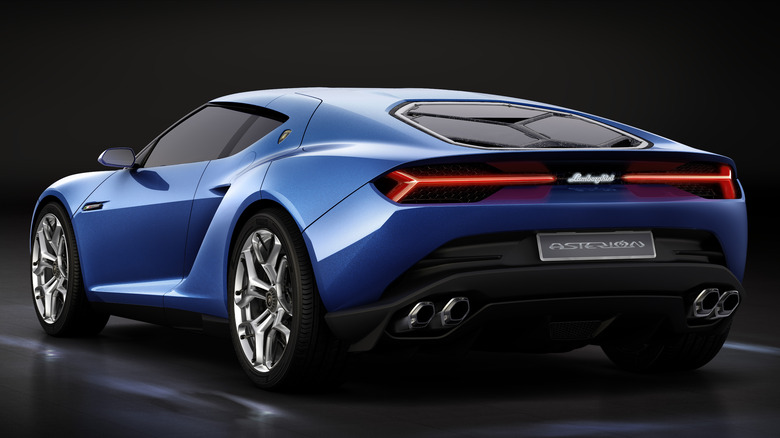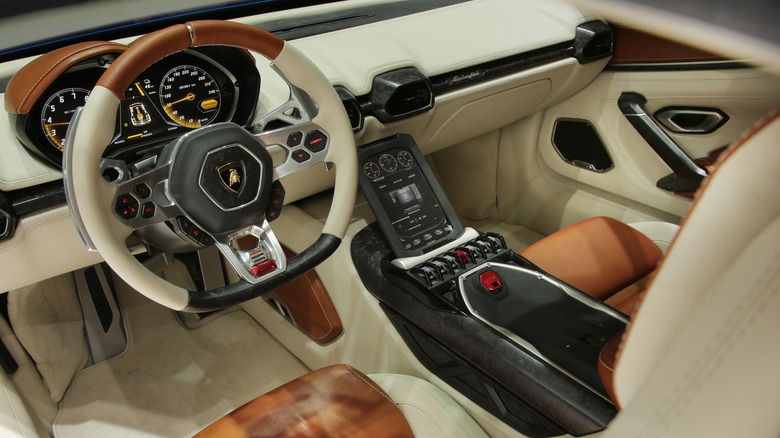The Lamborghini Asterion Was A Hybrid Supercar Concept Ahead Of Its Time
Lamborghini may be best known for its V-12 and V-10 combustion engines, but in 2014, the brand broke ground with a hybrid car packing four motors called the Asterion. The company from Sant'Agata Bolognese was just getting started with its hybrid and electric transformation, and later on, in 2019, Lamborghini proved that hybrid cars and speed go well together. The company produced 63 units of the Lamborghini Sián FKP 37.
The latter model was not only the first Lamborghini to ever be powered by a V-12 engine with supercapacitor-based hybrid technology, but with topping speeds of 220.5 miles per hour, it became the fastest and most powerful car Lamborghini ever built. This speaks to how serious the brand is about its new strategy and how it plans to shift into the hybrid and electric segment. In May 2021, Car and Driver reported that Lamborghini will begin phasing its vehicles away from combustion and into hybrid and all-electric power starting in 2023. By 2024, all gas-powered Lamborghini vehicles will be faded out. This innovation journey began with the Asterion.
The first hybrid sportscar for urban and track experiences
Electric and hybrid vehicles, in the early days, usually implied sustainability and convenience packed in economical options like the Prius, a symbol of the movement. The technology to give a hybrid or electric engine the power it needed to be the heart of a supercar was not developed until 2013, when the McLaren P1, the Ferrari LaFerrari, and the Porsche 918 Spyder — the so-called Holy Trinity of hybrid supercars — disrupted the scene (via Super Cars).
Lamborghini responded a year later with the Asterion, which was revealed during the Paris Motor Show in 2014. Immediately the Asterion stood out for having four motors: the Huracán's 5.2-liter 610 CV V-10 and three electric engines powered by lithium-ion batteries. Two of the electric engines were set up on the front, adding 300 CV to the front wheels, and a third acted as a generator placed on the dual-clutch gearbox. Combined, the Asterion had 910 CV, hit top speeds of 198 miles per hour, and had an all-wheel drive.
Only one Asterion was ever built, but the car was a strong message from Lamborghini. It offered a glimpse not only into the future of the iconic brand, but also the future of all hybrid and electric sports cars by balancing luxury and comfort with performance. Unlike the Holy Trinity of hybrid supercars, which were designed with a racing focus, the Asterion was the first hybrid supercar built for urban roads that could still deliver a solid track driving experience.

